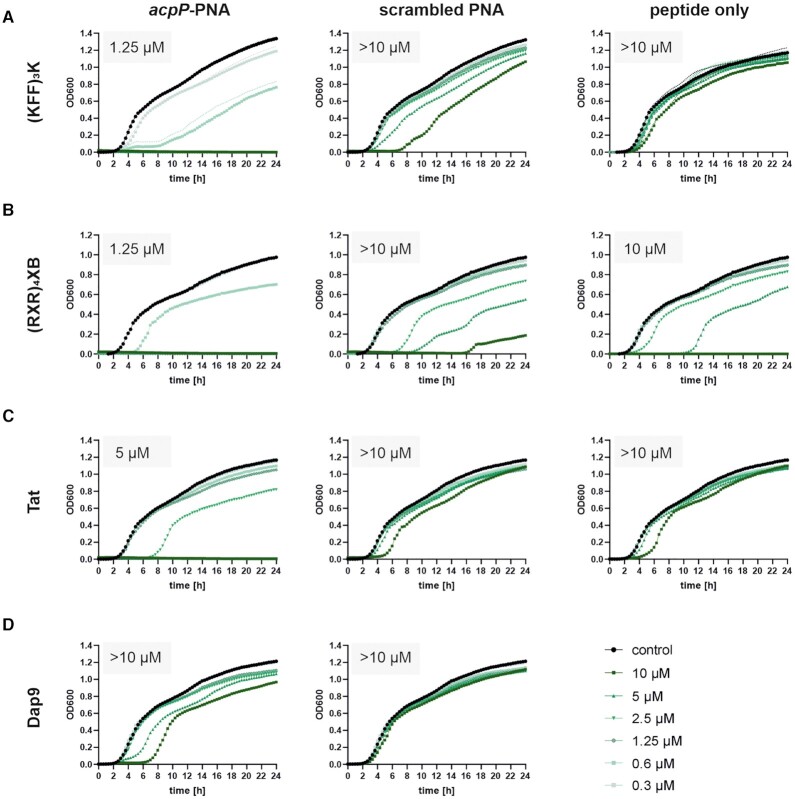Figure 2.
An antisense PPNA targeting acpP shows potent growth inhibitory capacity against UPEC. Determination of growth kinetics and MICs of UPEC 536 upon exposure to acpP-specific (left panels) and scrambled control (middle panels) PNAs, conjugated to (A) (KFF)3K, (B) (RXR)4XB, (C) Tat or (D) Dap9 peptide. (A–D) UPEC 536 (105 cfu/ml) were exposed to gradually decreasing concentrations (starting from 10 μM) of each PPNA or peptide. Treatment with an equal volume of water served as control (black curves). (A–C) CPPs (right panels) were used as PNA-independent controls. Growth is depicted as OD600 (y-axis) and was monitored over 24 h (x-axis). Each experiment was performed two to four times. Curves represent the mean of all biological replicates and dashed lines indicate standard error of the mean.

